St Thomas' Anglican Church
Rozelle
Henry Jones 1884, 2m., 12 sp. st., mechanical
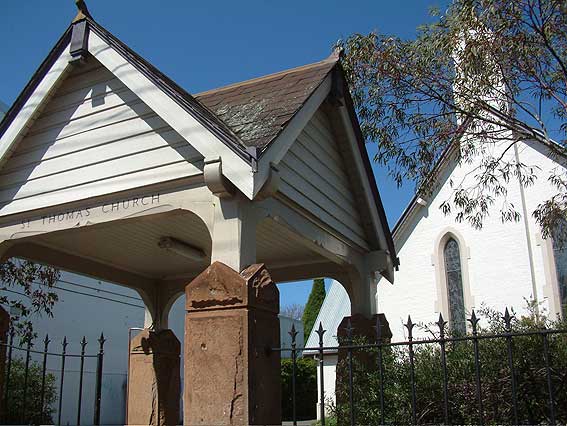
© PdL 2005
Historical and Technical Documentation by Peter Meyer
© OHTA 2005 (last updated October 2005)
A harmonium played by Mr William May was used for the decade between the opening of St Thomas' and the installation of the Henry Jones pipe organ in 1884. The Jones was designed by Frederick Morley and cost 315 pounds. Frederick's brother Felix supervised the construction in London. The earliest organists were Messrs E.H.T Russell, W. Morris and Arthur Mason, later City Organist. Mason was succeeded by S.Gordon Lavers and Francis Martin who composed one of the themes on which Alfred Hollins improvised at Sydney Town Hall during his concert tour in 1904. Probably the longest serving organist was Mr G.C.Boulton who played from about 1902 until at least 1924 if not longer. His successors were Mrs Lorna Travella, O.A.M. from about 1942-1950; Mrs R.P.Harrison, a pupil of Lilian Frost, 1950-52 and 1953-57; Mr G.W.Taafe, October 1952; Mr Ray Holland, 1952-1953, and Mr R.G.McIntosh 1957-59. The organists subsequently included Miss Cooper, Mr J.A.McDiarmid and Mr N.Dickson in 1995.
The choir members who helped Mr Charles Leggo to relocate the organ from the south to the north transept in 1936 included one John Kerr, later to become Governor General. S.T. Noad took over the maintenance from Leggo in 1943. Ten years later the organ narrowly escaped 'modernisation' by J.P. Eagles. For a predominantly working class congregation St Thomas had remarkably able organists and good choirs. [2]
The organ is rarely used today and is not in first-class condition. It is one of only two organs by Henry Jones, of South Kensington in London, to survive basically unaltered in NSW. [3]
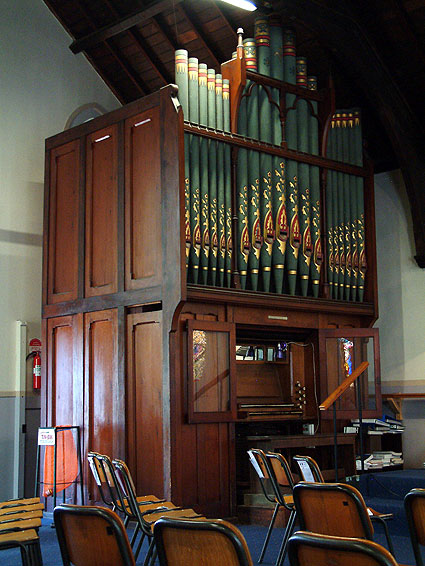
© PdL 2005

© PdL 2005
Henry Jones 1884 (2/12 mechanical)
| GREAT Open Diapason Rohr Flöte Dulciana Principal Harmonic Flute Fifteenth SWELL Lieblich Gedact Gamba Vox Angelica Gemshorn Cornopean Tremulant PEDAL Bourdon |
8 8 8 4 4 2 8 8 8 4 8 16 |
COUPLERS
Swell to Great
Swell Sub Octave
Swell to Pedals
Great to Pedal
Compass 56/30
Mechanical action throughout
2 composition pedals to Great
Hitch-down swell lever
No. of pipes = 622
 |
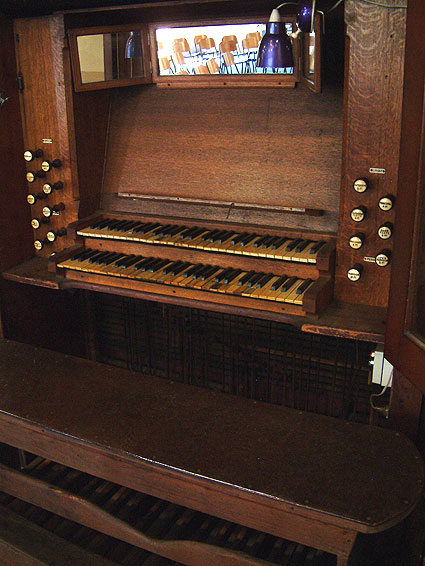 |
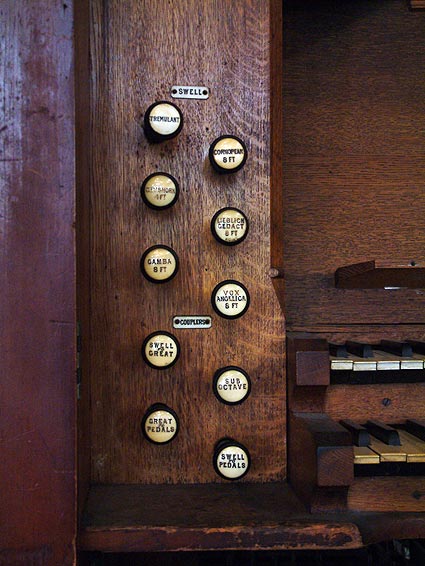 |
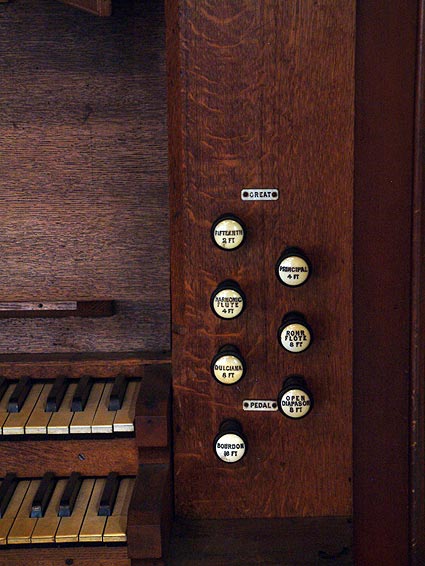 |